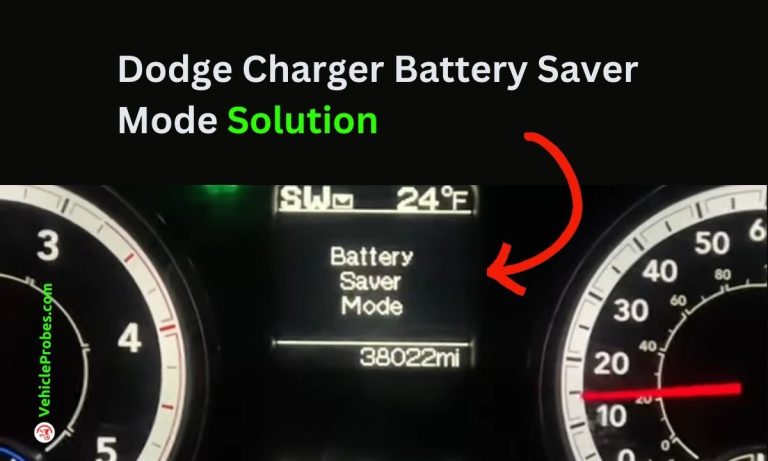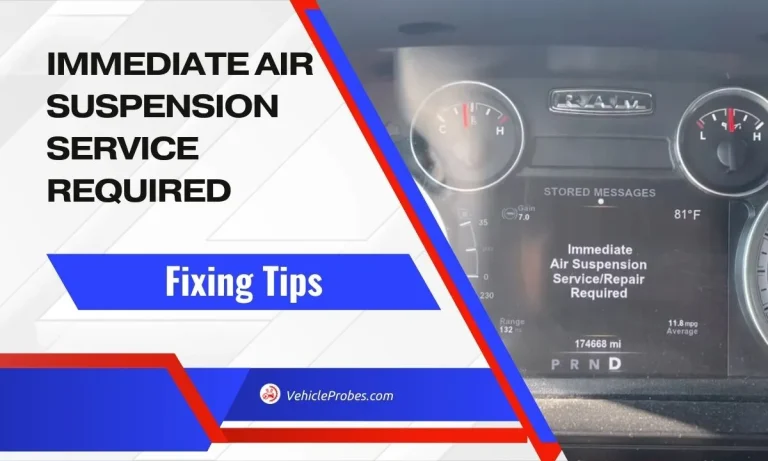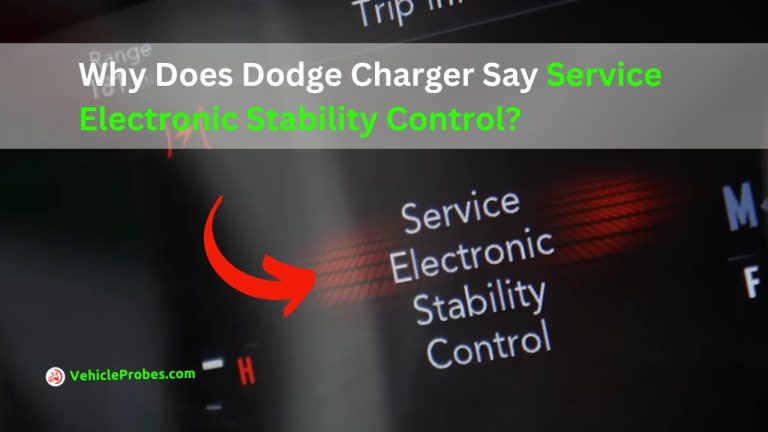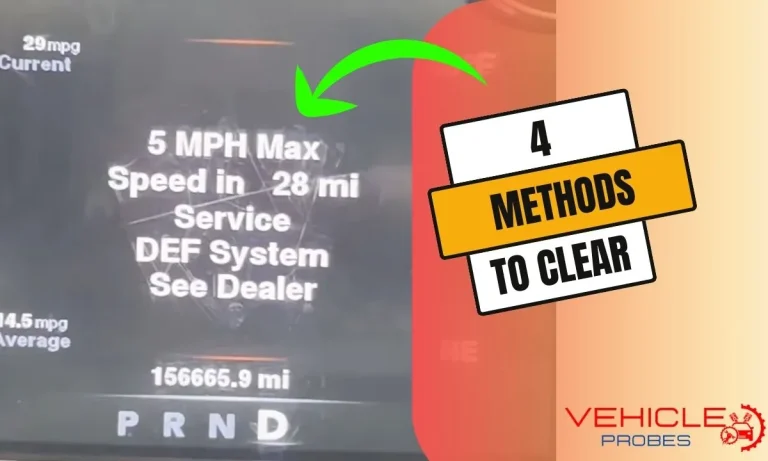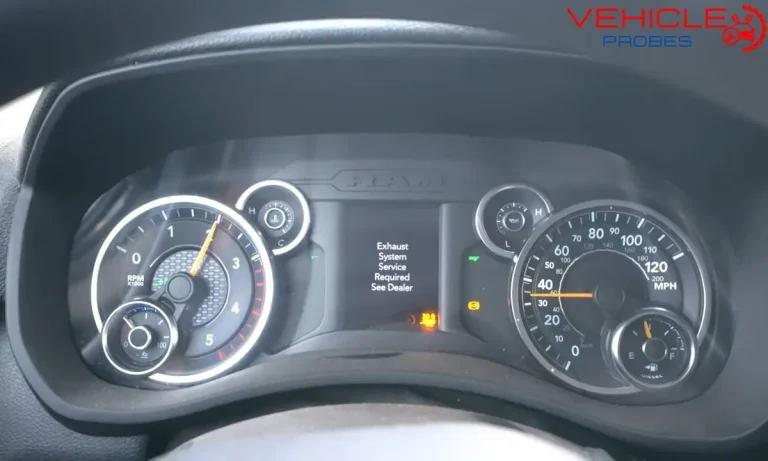Dodge Challenger Headlights Not Working: Fix It Fast (Solution)
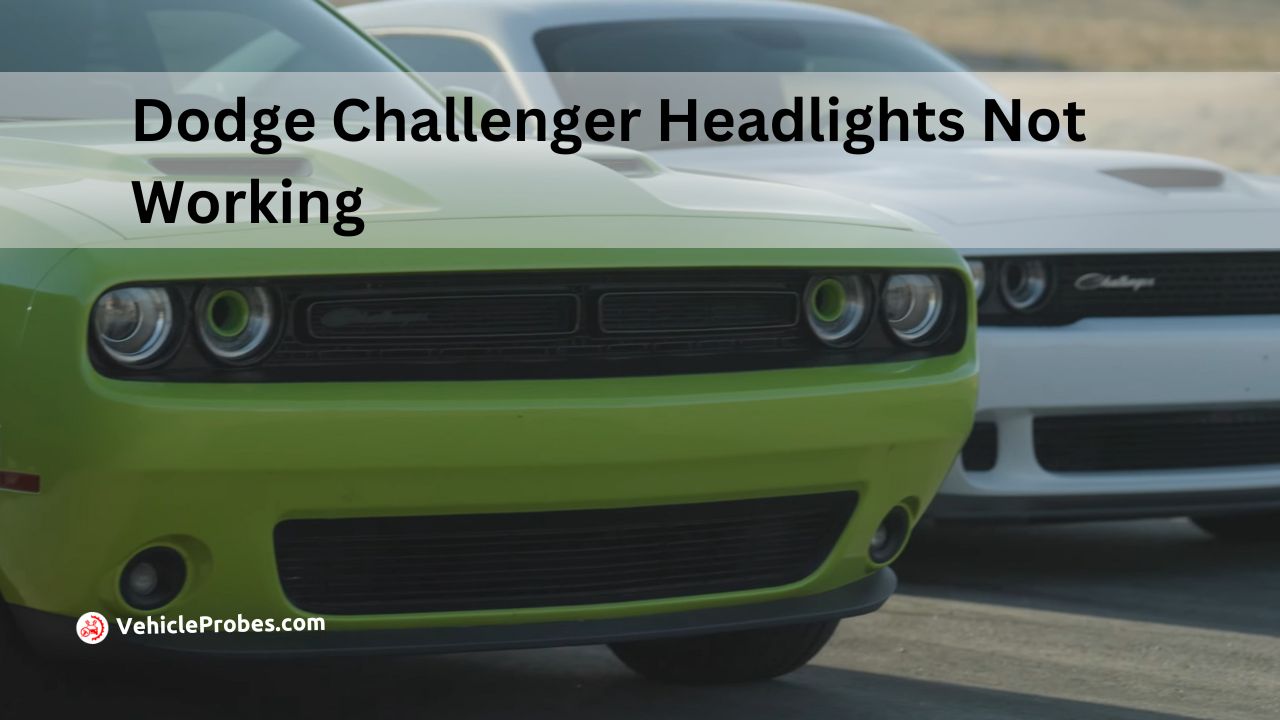
If you normally drive your Dodge Challenger in the evening or at night, you will be well aware of the importance of headlights for your vehicle. However, if your Dodge Challenger headlights suddenly fail to turn you will be left wondering: why did my Dodge Challenger headlights stop working?
Multiple reasons can cause this including a blown fuse, broken wires, a faulty bulb, or a malfunctioning switch. Inspecting, identifying, and then replacing the defective element will fix your Dodge Challenger headlights.
Let’s have a detailed exploration of the Dodge Challenger headlight solutions.
Identifying Dodge Challenger Headlight Not Working Issues
Headlight issues are common in Dodge Challenger when care isn’t taken. Excessive use, or driving the Dodge Challenger on rough terrain can cause the wires, fuses, and other components to get worn out and damaged. Let’s identify some of the Dodge Challenger’s headlight problems.
Dodge Challenger headlights not working at all
The Dodge Challenger headlights are a crucial feature that allows the driver to clearly see ahead in the dark. One of the problems with the Dodge Challenger headlights is the front headlights not working at all. This can cause distress to the driver as he won’t be able to see the road or anything in front of the car during nighttime. Driving in the dark with headlights not working can be dangerous as lack of view makes the car more prone to accidents.
Only one Dodge Challenger headlight not working
There is a reason why two headlights are a part of your Dodge Challenger. Together the two headlights provide enough light to allow the driver to see the road with ease. This helps drive safely and respond to potholes, and objects in front of the car quickly. When one of the headlights is suddenly not working, the driver won’t be able to have a clear enough view of the road. This is better than no headlights working at all but it’s still a risky move to drive with one headlight working.
Dodge Challenger headlights dim or flickering
When the Dodge Challenger headlight is dim or flickering, it can be a nuisance as it distracts the driver. This diverts concentration and can be hazardous because the chances of accidents increase. Dim headlights also prevent the driver from easily seeing the road, and flickering headlights barely allow clear visibility. This is because by the time the human eye adjusts to light view, the light goes out, and the eye has to adjust to the dark again. Replacing these lights is mostly the perfect solution to fix the issue while sometimes securing or replacing the wires works as well.
Dodge Challenger high beams not working
When the Dodge Challenger’s high beam is not working, you will notice no shift in the light when you turn on the high beam button. This will prevent the driver from looking ahead on a long road, and his reaction time will be increased when something comes in front of the car. This is unsafe when driving on an open road with low light conditions.
Dodge Challenger low beams not working
The Dodge Challenger’s low beam not working means that the front view right below your car will be obstructed. This view is needed when driving at a slow pace on uneven terrain or a road with potholes. Wiring issues can cause this low beam to stop functioning, becoming trouble for the driver when driving at low speeds.
Dodge Challenger DRL not working
The daytime running light (DRL) for your Dodge Challenger mainly stops working when there is an issue with the fuse. To check this, the fuse box in the trunk should be looked into instead of the one in the front. DRL allows the headlights to operate during daytime, and are specifically helpful when the weather is cloudy. If the DRL is not working, it can lead to accidents, hence a hazardous factor.
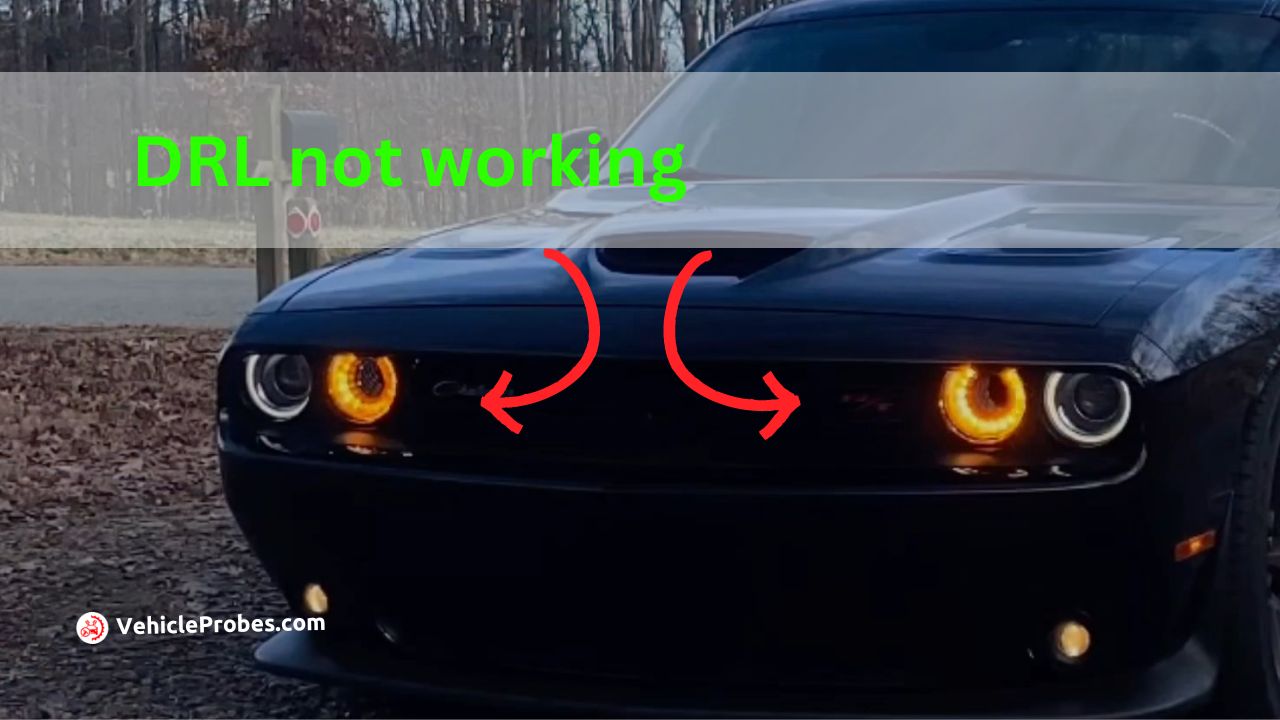
What Causes Dodge Challenger Headlights to Stop Working?
Blown fuse for Dodge Challenger headlights
The Dodge Challenger fuses prevent excessive current flow in the vehicle’s electrical system. A blown fuse means that there was a surge in the current but the fuse prevented any great damage that may be caused by it by sacrificing itself. The Dodge Challenger headlight fuse location is at two places, one in the car’s bonnet and the other in its trunk. Any one of these can be blown and replacing them will get the headlight to start working again as the current will now be easily passed through.
Faulty relay in Dodge Challenger headlight circuit
Since the relay controls the flow of current from the battery to the headlights, its failure can cause the headlights to stop working. This is because a faulty relay won’t be able to open or close the Dodge Challenger headlight circuit and the flow of current will be obstructed. This will cause no power supply to the headlights, and they will stay turned off.
Burned-out headlight bulb in Dodge Challenger
The bulb is the main character of the Dodge Challenger headlight illumination. When this bulb is burned out, it will no longer produce light, causing the headlights to stop working. This burn-out is mostly when the filament of the bulb wears out due to long-term or excessive use. The filament starts by reducing light production, and at first, the headlights will produce dim lights and then completely turn off.
Dodge Challenger headlight switch malfunction
It is the headlight switch that allows the power to flow along the circuit, in turn activating the headlights. If the Dodge Challenger headlight switch malfunctions, the headlights will automatically stop working as there will be no current flowing through them to illuminate them.
Wiring issues in the Dodge Challenger headlight system
The wiring can get worn, and broken in a Dodge Challenger, preventing the flow of power through the electrical system. The wires are the main power transmission medium, and with broken wires, and lack of power transfer, the headlight won’t turn on. If the vehicle is strained too often, the wires can deteriorate and break but can be easily fixed by wire replacement.
How Can I Troubleshoot Dodge Challenger Headlights Not Working?
Even if your Dodge Challenger headlights are giving you a hard time, they can easily be fixed by simple troubleshoots. Let’s have a look at a few ways you can troubleshoot your Dodge Challenger headlights not working.
How to check fuses for Dodge Challenger headlights
Fuses can be a reason behind your headlight not working and need to be replaced to restore headlight operation. Let’s see the steps on how to check fuses for Dodge Challenger headlights.
- First, locate the fuse box in your Dodge Challenger. Mostly, a fuse box is either present in the bonnet or in the trunk of the car.
- Then, open the fuse box and inspect the fuses. They will be melted and visibly physically damaged if faulty.
- If you don’t see any signs of physical damage, you can use a multimeter to check if the fuse is blown. Connect one end of each probe of the multimeter to the fuse. If the multimeter beeps, then the fuse is fine, but if it doesn’t beep then it is blown and needs to be replaced.
- Replace the blown fuse with a new fuse of the same rating. Start by removing the faulty fuse using a fuse puller or needle-nose pliers, and secure the new fuse in the fuse box by making sure that it is properly seated.
- Check if your headlights are working fine.
How to test headlight bulbs in Dodge Challenger
The headlight bulb damage automatically stops the headlight from functioning since no illumination is being produced. To fix the bulbs, you should first test if the bulb is faulty.
- First visually inspect the headlight bulb. Look for any physical signs of damage such as broken filaments, discoloration, or any other sort of cracks.
- Next, ask someone to turn on the headlights while you check the bulb’s illumination behavior at low beam and high beam. If the bulb is not illuminating at all, it is faulty.
- Same as for a fuse, you can use the multimeter to check the headlight bulbs as well. Connect the multimeter probes to the bulb and if it beeps then it is working fine but if it doesn’t beep then the bulb is broken.
- If the bulb is not working, you can replace it by gradually twisting it in a counterclockwise direction to pull it out. Replace this bulb with a new bulb and fix it into the socket securely.
- Turn on the headlights, and check the activity of the bulb at low beam and high beam.
Troubleshooting Dodge Challenger headlight switch
The Dodge Challenger headlight switch can be a problem if it fails to work. The headlight electrical system will not be activated and the headlights won’t work. So how can you troubleshoot the Dodge Challenger headlight switch?
- First, turn the ignition of your Dodge Challenger on but don’t crank up the engine.
- Next, turn the headlight switch on and test it by switching to various positions including auto, parking lights, on, and off.
- Listen for any clicking sounds during your headlight switch test. The clicking sounds in the Dodge Challenger headlight switch indicate that the switch is faulty.
- Use a testing replacement switch to check if your current headlight switch is actually faulty.
- If the headlights work fine with the testing replacement switch, replace the current switch with a new working one.
When to take your Dodge Challenger to a mechanic for headlight problems
Let’s say your Dodge Challenger headlights are not working but you diagnosed the problem behind it and fixed the issue. In this case, visiting a mechanic won’t be necessary but if your Dodge Challenger headlights are not working due to a complicated issue, visiting a mechanic to solve your headlight problem will be necessary.
The complex causes behind the headlight not working include faulty wiring, blown fuse, burned headlight bulb, and malfunctioning headlight switch. These problems are tough to fix on your own because they require detailed professional intervention to avoid minor mistakes that may cause further damage to the headlight system. Even with the replacement of a bulb, the entire headlight glasses are removed, so it’s not a simple job.
It becomes crucial to take your Dodge Challenger to a mechanic for headlight problems when fault inspection is required, and component replacement is compulsory.
How to Prevent Dodge Challenger Headlight Problems in the Future?
To prevent Dodge Challenger headlight problems in the future you can take some preventive and maintenance measures.
- Regularly inspect your headlights for any signs of dimming light, moisture buildup, or damage so that you can fix the issues promptly before they worsen and you end up driving the Dodge Challenger in the dark with headlights not working.
- Use quality bulbs for your headlights so that they last long even if excessively used, and you don’t have to replace them regularly.
- Avoid installing aftermarket accessories in your Dodge Challenger’s headlight system to prevent any extra power loss. This helps maintain a normal load on the headlights instead of excess strain.
- Avoid driving on rough terrain with potholes as hard impact affects the wiring, and headlight assembly, causing it to wear out or become loose.
Conclusion
In conclusion, the Dodge Challenger headlights not working can be caused by defective fuses, wiring, bulbs, relays, or switches. A fault in any of these causes the headlights to either dim or not work at all. You can fix the issue by diagnosing the cause behind the headlights not working by using a physical inspection or a multimeter. Once the malfunctioning component is diagnosed, it should be replaced. However, rather than wasting money on worsened headlight problems, and facing difficulties driving in the dark, it is better to take preventive measures such as regular maintenance inspection, using quality bulbs, and driving carefully. This way your headlights will keep operating fine for a longer time.

